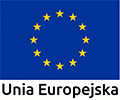The organizer of the ceremony commemorating the revolt at the Treblinka II Extermination Camp was the Emanuel Ringelblum Jewish Historical Institute in cooperation with the Treblinka Museum. The Nazi German Extermination and Forced Labour Camp (1941-1944). The President of the Republic of Poland, Andrzej Duda, assumed the honorary patronage over the ceremony of the 80th anniversary of the extermination of Jews conducted as part of the German Operation “Reinhardt”
In the Treblinka II Extermination Camp, at the beginning of 1943, a secret organization of prisoners was formed – the so-called “Organizing Committee”, which task was to prepare an armed revolt and a mass escape. The revolt broke out on the Monday afternoon, on August 2, 1943. There were about 840 prisoners in the camp on that day. Not all of them took part in the revolt. It is estimated that only about 200 people managed to escape from the camp and subsequent chase. More than 100 of them survived the war. After the revolt, the Germans began to liquidate the camp by dismantling all buildings and installations. They also plowed and sowed lupine over the area. In November 1943, no tangible trace was left of one of the greatest crimes in human history.
The decision to murder all European Jews in a systematic and planned way was probably made in the autumn of 1941. On January 20, 1942, at a conference held in a villa at Großer Wannsee 56/58 in Berlin. The actions were given the codename Operation “Reinhardt” (Einsatz Reinhardt). Initially, the death camps of Operation “Reinhardt” were established in Bełżec (March 1942) and Sobibór (the turn of April and May 1942). The decision to establish the third extermination camp was made in the spring of 1942 and resulted from the decisions to exterminate the Jewish inhabitants of Warsaw and Jews residing in the General Government and the Białystok District. The first victims of the SS-Sonderkommando Treblinka were almost 300,000 Jews from the Warsaw ghetto. In the years 1942-1943, in the German Treblinka II Camp, the Germans murdered almost 900,000 Jews from occupied Poland and other European countries. In 2022, we pay tribute to the victims of the German Operation “Reinhardt”. 80 years ago, the action resulted in the liquidation of almost all Jewish communities in Poland.
This year’s ceremony of the 79th anniversary of the revolt at the Treblinka II Extermination Camp began at 12:00 P.M. on 2 August at the main monument. The highest state and local authorities, members of the diplomatic corps, clergy, official delegations from Poland and abroad and numerous members of the Jewish and Polish community participated in the ceremony. The guest of honor was Ada Krystyna Willenberg, widow of Samuel Willenberg – a prisoner of the SS-Sonderkommando Treblinka. Righteous Among the Nations were also present. They were represented by Józef Maliński, whose parents Jan and Anna (née Rostek) and older sisters – Helena Rutkowska and Regina Tańska saved three Jewish women during the German occupation: Konstantyna Rudnik, her 5-year-old daughter Halinka Rudnik and Konstantyna’s younger sister, Marysia Krawczyk.
Ada Willenberg, the widow of Samuel Willenberg, a prisoner of the Treblinka II Extermination Camp, said in her speech: “I come here every year. […] There have not been so many people for years. Thank you very much for that. […] I am glad that the memory of this camp is not forgotten. I am glad that something will be built here, because this camp was treated neglectfully. We bought the cornerstone and set it ourselves. My husband lived to see this stone erected. […] For many years we tried to establish a foundation and raise money for the construction of a building […]. It was not possible at that time. Now the Polish State has taken care of it. […] I have a goal in life, I will try to live to this moment. […] Maybe in 3-4 years we will be able to celebrate the opening of this building. So many people died here…. Including my mom. This place deserves decent conditions”.
Monika Krawczyk, director of the Emanuel Ringelblum Jewish Historical Institute, emphasized that all the people gathered in Treblinka today are united by the memory: “Warsaw and Treblinka are located in their own neighborhood. The place where we are now is the largest war cemetery in Poland. […] About 2,000 Roma also died here. Today the Roma are celebrating the European Roma Holocaust Memorial Day. Let’s also remember about them. […] About 2 million people were murdered during the Operation ”Reinhardt”. […] The revolt that took place here was a fight for prisoners’ dignity. […] As Samuel Willenberg said: “The entire Treblinka was set on fire.” […] Samuel Willenberg, a participant in the revolt, was also a Warsaw insurgent. We remember this especially these days. This year we pay tribute to the victims of Operation “Rainhardt”. […] Honor their memory!”
The President of the Republic of Poland, Andrzej Duda, wrote a letter to the participants of the ceremony, which was read by Małgorzata Paprocka, Secretary of State in the Chancellery of the President of the Republic of Poland: “The Treblinka II Extermination Camp was one of the last extermination sites of Operation ”Reinhardt”. We pay tribute to the victims. Day after day, trains were arriving at the camp’s siding. […] The Jewish population was exterminated day by day. The machine jammed here on August 2, 1943, when the revolt started. In November, the camp was closed. The victims were to be forgotten. […] Our duty is to protect the memory of this crime. […] We must spread the message from generation to generation: No more war, no more furnaces, no more anti-Semitism”.
A letter from the Marshal of the Sejm of the Republic of Poland, Elżbieta Witek, was read by the Deputy Head of the Chancellery of the Sejm, Christian Młynarek: “[…] In the Nazi extermination camps, evil manifested itself with the greatest force. […] Treblinka, in which over 800,000 were killed makes us realize the enormity of evil. […] Evil is not omnipotent, however. Today we pay tribute to the participants of the revolt who resisted to it.”
A letter from the Prime Minister of the Republic of Poland, Mateusz Morawiecki, read Anna Kaszuba, the Head of the Regional Office in Siedlce: “Together with you all, I bow to the courage of the prisoners who took part in in the revolt. […] The camp, which became the place of death for about 900,000 people, was one of the main wheels of the Holocaust. […] The runaways were immediately pursued on August 2. After the revolt, a few more transports were brought to Treblinka. In November, the camp was closed. Victims were to be forgotten. The memory lives in us. We will always remember their highest act of courage. Honor their memory!”
Małgorzata Kidawa Błońska – Deputy Speaker of the Sejm of the Republic of Poland said that: “While being in this place, it is hard to believe that a few dozen years ago there was hell here. Samuel Willenberg told me about it. […] Without telling the truth about it we cannot really live with the thought that we are safe!”
Gabriela Morawska-Stanecka, Deputy Speaker of the Senate of the Republic of Poland cited the resolution of the Senate of the Republic of Poland of July 22, 2022, in which senators emphasized that the beginning of the great liquidation action of the Warsaw ghetto is undoubtedly one of the most tragic dates in the history of the Jewish population in occupied Poland. “We recall this tragedy of the Jewish population – the human tragedy, the tragedy of the nation – but also the tragedy of Warsaw and Poland. We remember the murdered Jewish people, we remember Polish Jews, our fellow citizens. Let the memory of these dramatic events be an expression of opposition and condemnation of the criminal, genocidal activities, so that the atrocity that happened 80 years ago will never happen again”. As the Deputy Marshal added, after the tragedy and crimes committed during World War II, the world thought that a better and safer world would be reborn, “a world that would take care of people and their rights”. “The international community has confirmed this with many agreements, treaties, civilized countries have committed themselves to respecting human rights, to building bridges between nations to restrain their imperial ambitions. Unfortunately, we have recently learned how illusory these hopes were.” That is why, in her opinion, it is important to remember, educate, and to make people aware of this tragedy, especially young generations, so that such consequences never happen again and that people do not remain indifferent. “Because the eleventh commandment is: do not be indifferent” – the Deputy Speaker of the Senate of the Republic of Poland thus referred to the words of the editor, Marian Turski, who survived Auschwitz.
Radosław Jaśczak from the Department of National Heritage spoke on behalf of Jarosław Sellin – Secretary of State in the Ministry of Culture and National Heritage, General Conservator of Monuments, who quoted Samuel Willenberg’s memories of Rut Dorfman. “This young girl will not go to college. She will not start a family. She will not be a mother. She will not hold grandchildren. Her figure is immortalized on one of the sculptures by Samuel Willenberg. The sculptures that we hope will go to the special Hall in the new building of the Treblinka Museum.”
Yacov Livne – the Ambassador of Israel made a special speech. He emphasized that we must believe what happened here, because it really happened, and we have to make sure it will never happen again. He also added: “After Jews, Poles and other nations were planned to be murdered. This was crazy. It is hard to believe. This is a lesson for us today. We can only learn it by cooperating in friendship.”
Aldona Machnowska-Góra – Deputy Mayor of the Capital City of Warsaw also delivered a speech: “[…] This is where the largest Jewish cemetery is located. This is where Warsaw’s DNA is. […] We cannot talk about pre-war Warsaw without talking about Jews and its inhabitants. We cannot talk about post-war Warsaw without talking about Treblinka. To all victims and fighters honor and glory to their memory!”.
A letter from President of the Institute of National Remembrance, Dr. Karol Nawrocki – was read by dr hab. Karol Polejowski, Deputy President of the Institute of National Remembrance: “Efforts to ensure that the victims are forgotten were unsuccessful. […] Treblinka is a great lesson about the power of evil, but also a parable about the victory of good. […] Samuel Willenberg spoke about it in his memoirs and presented it through his sculptures. The exhibition of the sculptures has already been presented in 15 cities in Poland. […] Soon it will be presented in Germany. […] Ultimately, the sculptures will be exhibited in the newly built museum building in Treblinka”.
The official ceremony ended with prayers conducted by Jewish and Christian clergy. Rabbi Shalom Dow Ber Stambler, Rabbi Icchak Chaim Rapoport and Fr. Grzegorz Giemza, pastor of the Evangelical-Augsburg parish in Węgrów prayed for the murdered.
Then, wreaths were laid in tribute to the murdered in front of the main monument in the Treblinka II Extermination Camp. Delegations also laid flowers in front of the monuments of Polish and Roma victims at the Execution Site.
After the ceremony, participants had the opportunity to have a guided tour of the former German Extermination Camp Treblinka II with educator of the Jewish Historical Institute and guides from the Treblinka Museum, as well as to see the exhibition prepared by the employees of the Treblinka Museum, entitled “SS-Sonderkommando Treblinka – the Camp of Operation ‘Reinhardt’. Exhibition on the 80th Anniversary of the establishment of the Treblinka II Extermination Camp”.





